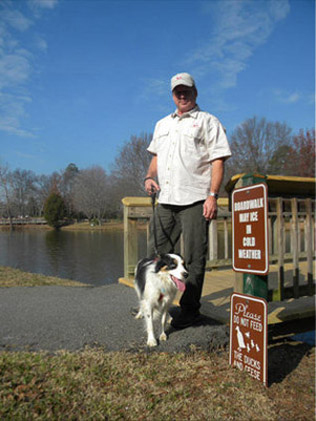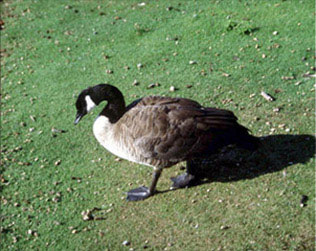A half-century ago Canada Geese were almost extinct because of excessive hunting and destruction of their habitat. Now that the population of these handsome birds has been successfully restored, occasionally large flocks of migratory geese cause problems in areas where they try to coexist with humans. To make matters worse, we now have local geese that do not migrate and have taken up residence in the Carolinas, often on the same property throughout most of the year. The likely results:
• Goose Droppings
A goose may produce up to 1 lb or more of feces per day (which may carry e‐coli bacteria). Goose droppings litter the landscape and create negative first impressions to visitors, tenants and employees. Feces can be tracked inside, contaminating the lobby, reception and other areas.
Potential human pathogens in fecal material include Cryptosporidium, Giardia, Listeria, Chlamydia Psittaci and Rotavirus.
Goose feces can pollute the water and make the water unsuitable for swimming. If high geese numbers exist in shallow waters, their droppings can change the water’s ecology and cause bacterial, algae and other problems.
• Destruction of Turf and Soil Erosion
A single goose can damage 5 sq feet of turf daily.
Geese can also eat up to 3 lbs of grass per day per bird.
• Geese can cause traffic and other human hazards
• Aggressive Nest Protection
Geese become very hostile in certain situations, causing a possible liability issue for property owners. Geese are territorial birds and will not hesitate to protect their
nest and young.
• A pair of geese can, in 5 to 7 years, easily become 50 to 100 birds, so act now before a minor inconvenience today becomes a major problem tomorrow.







